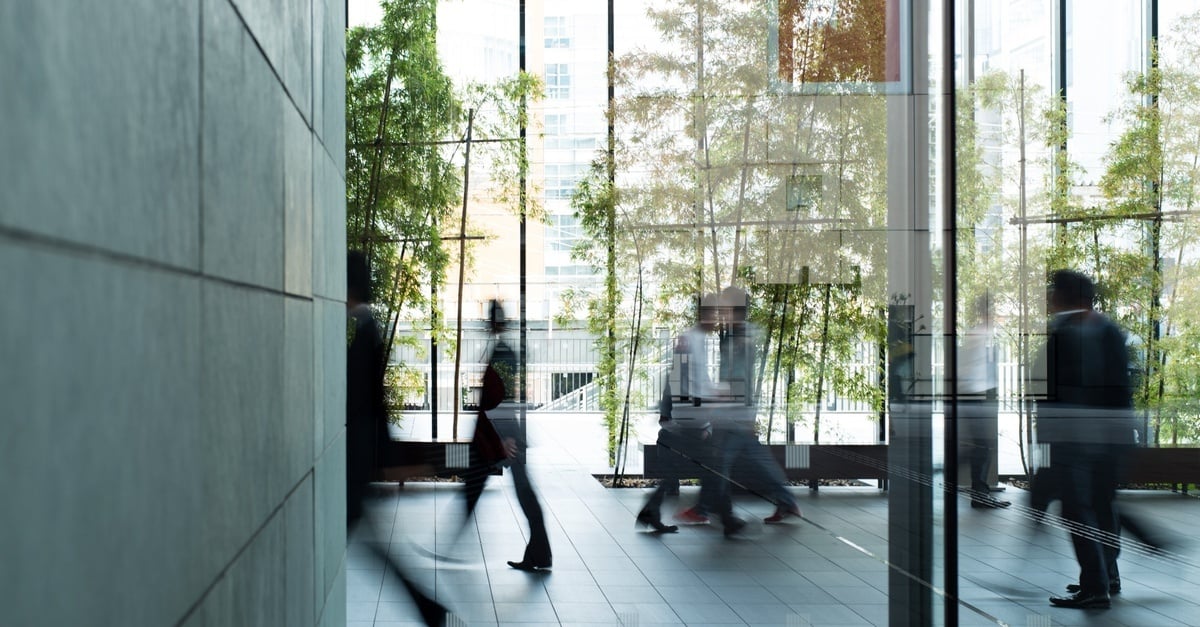Newsletter
Investing in commercial air quality monitoring is a crucial first step in any healthy building project. However, installing commercial air quality monitors, a task which seems simple, can quickly become tricky. Where should these monitors be installed? Are there any placement factors to consider before installation?

To answer these questions, we are going to draw from two building standards and their respective placement requirements: RESET and WELL. Backed by science, these building standards give us an idea of the best installation configuration for any project. Please note that we will be discussing interior air quality monitoring; in-duct monitors have different considerations to keep in mind.
What’s the Optimal Location for Commercial Air Quality Monitors?
When determining the placement of commercial air quality monitors, there is one significant goal to keep in mind: representativeness. Device readings should reflect the true air quality people experience; in other words, monitors need to sample the air building occupants are breathing. This goal has implications for the height, relative placement, and density, which we will discuss below.
You should install air quality monitors in rooms and open spaces that are regularly occupied. The chart below lists which spaces we recommend installing air quality monitors in.
| Standard Spaces | Recommendation |
| Lobby/reception | Recommended |
| Break room | Recommended |
| Conference room (any size) | Recommended |
| Collaboration areas (rooms or spaces) | Recommended |
| Workstations | Recommended |
| Multipurpose rooms | Recommended |
| Game/rec rooms | Recommended |
| Kitchens | Recommended |
| Fitness centers | Recommended |
| Restrooms/shower rooms | Subject to project needs |
| Mailroom/shipping & receiving | Recommended |
| Labs | Recommended |
| Storage rooms | Not recommended |
| Locker rooms | Not recommended |
Kaiterra's enterprise air quality monitors have a recommended coverage area of 3,500ft² (325m²), with the coverage of each individual space calculated individually. For example:
- One (1) open space of 3,500ft² would require one (1) monitor
- Three (3) conference rooms of 225ft² each would require three (3) monitors - one in each room
Monitors should be placed in the breathing zone, a height range between 3 and 6 ft (0.9 and 1.8 m) above the floor. Placement in this zone will ensure that the device collects samples from air that building occupants are breathing.

Similarly, monitors should be installed away from corners, doors, windows, fresh air diffusers, or air purifiers. Doors and windows provide avenues for outdoor air to affect air quality readings, especially if the outdoor air is significantly better or worse than indoor air. Fresh air diffusers and air purifiers can have a similar effect, and commercial air quality monitors near these devices will provide skewed readings.
According to the RESET Standard, monitors should be at least 16 ft (5 m) away from operable windows, fresh air diffusers, and air purifiers. For windows, if space doesn't permit this placement, then the monitor should be placed no closer to the window than half the space, measured from the window inwards. For purifiers and diffusers, if space doesn't permit, then devices should be placed closer to air returns than air diffusers.

In enclosed spaces, monitors should not be placed on a wall with a door, and monitors should be at least 3 ft (0.9 m) away from workstations. If this is not possible, then the monitors should face the occupants' backs.
Here is a sample floor plan that demonstrates how air quality monitors could be distributed across a space:

Lastly, commercial air quality monitors should be distributed across large, open spaces and floors. Following guidelines set forth by WELL, monitors should be placed every 3500 ft² (325 m²) or one on each floor, whichever is stricter. This strategy will help ensure everyone is "covered" by the monitoring system, and can even help you locate inefficiencies in your HVAC system.
Need more information about air quality monitoring? Check out our newest guide all about commercial air quality monitoring and key things to consider before investing an a monitor below:






.png?width=200&height=148&name=Menu%20C%20(2).png)

.png?width=307&height=228&name=Menu%20-%20D%20(1).png)
.png)





